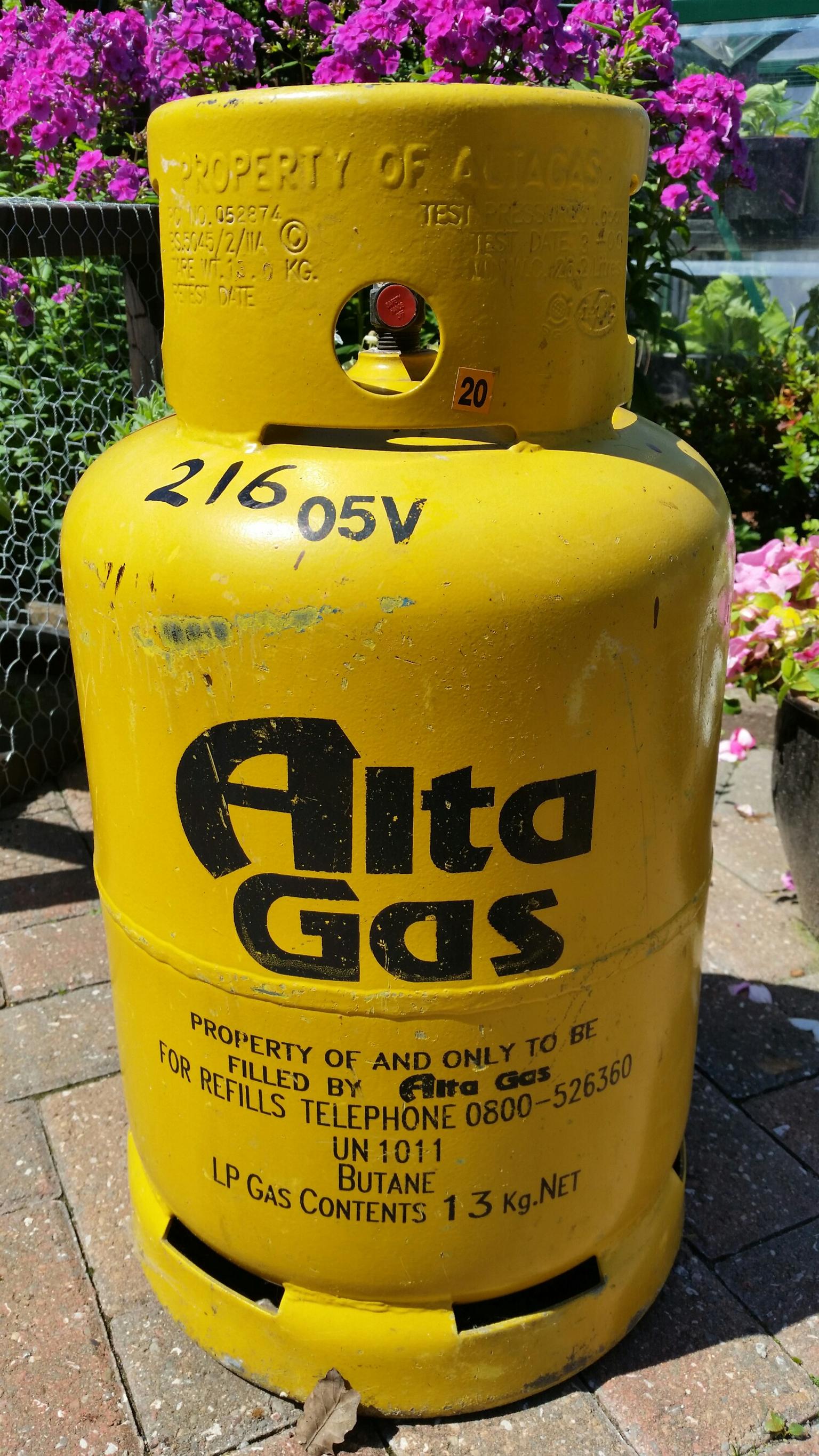whats the difference between carbon dioxide and liquefied butane gas cylinders?
For my applied science assignment I've been told - ''Carbon dioxide does not liquefy when put under pressure. Butane gas (used in camping gas cylinders) does liquefy. Explain how the cylinders used to store carbon dioxide would be different from those used to store butane (camping gas).''
I have written about the butane gas cylinder having a thicker wall making it stronger, but i was wondering if anyone had any other ideas...
(applied science, physics, chemistry)
I have written about the butane gas cylinder having a thicker wall making it stronger, but i was wondering if anyone had any other ideas...
(applied science, physics, chemistry)
Original post by owenjackson_
For my applied science assignment I've been told - ''Carbon dioxide does not liquefy when put under pressure. Butane gas (used in camping gas cylinders) does liquefy. Explain how the cylinders used to store carbon dioxide would be different from those used to store butane (camping gas).''
I have written about the butane gas cylinder having a thicker wall making it stronger, but i was wondering if anyone had any other ideas...
(applied science, physics, chemistry)
I have written about the butane gas cylinder having a thicker wall making it stronger, but i was wondering if anyone had any other ideas...
(applied science, physics, chemistry)
I sort of disagree with you... you can put butane in quite thin walled single use cylinders as used for lighter refills and the cheaper types of camping stove often seen in supermarkets. They're basically aerosol cans that you could probably crush in your hands once they're empty.

http://www.go-system.co.uk/277g-butane-cartridge
But it's also put into quite thick walled cylinders for refillable larger sizes that are liable to get knocked around have a tough time of it.
The limit on the amount of butane you can put in a cylinder is that you can't put any more butane in when it's full of liquid - and it does that at a pretty low pressure for home and camping type temperatures - in fact Butane is pretty useless camping fuel at 5 degrees C or less, it's very reluctant to come out of the cylinder under its own pressure.
see the graph on this page https://www.clesse.co.uk/gas-types-vaporisation-cylinder-offtake-rates-and-conversion-tables/
CO2 cylinders are (afaik) always made with thick walls which allows for a greater pressure and a greater mass of Carbon Dioxide to be contained
The bigger type of butane cylinder has a meltable plug (the red thing visible through the circular hole in the handle) which melts and vents the contents in a controlled way in the event of it being overheated (e.g. in a fire)
(edited 4 years ago)
Original post by Joinedup
I sort of disagree with you... you can put butane in quite thin walled single use cylinders as used for lighter refills and the cheaper types of camping stove often seen in supermarkets. They're basically aerosol cans that you could probably crush in your hands once they're empty.

http://www.go-system.co.uk/277g-butane-cartridge
But it's also put into quite thick walled cylinders for refillable larger sizes that are liable to get knocked around have a tough time of it.

The limit on the amount of butane you can put in a cylinder is that you can't put any more butane in when it's full of liquid - and it does that at a pretty low pressure for home and camping type temperatures - in fact Butane is pretty useless camping fuel at 5 degrees C or less, it's very reluctant to come out of the cylinder under its own pressure.
see the graph on this page https://www.clesse.co.uk/gas-types-vaporisation-cylinder-offtake-rates-and-conversion-tables/
CO2 cylinders are (afaik) always made with thick walls which allows for a greater pressure and a greater mass of Carbon Dioxide to be contained
The bigger type of butane cylinder has a meltable plug (the red thing visible through the circular hole in the handle) which melts and vents the contents in a controlled way in the event of it being overheated (e.g. in a fire)

http://www.go-system.co.uk/277g-butane-cartridge
But it's also put into quite thick walled cylinders for refillable larger sizes that are liable to get knocked around have a tough time of it.
The limit on the amount of butane you can put in a cylinder is that you can't put any more butane in when it's full of liquid - and it does that at a pretty low pressure for home and camping type temperatures - in fact Butane is pretty useless camping fuel at 5 degrees C or less, it's very reluctant to come out of the cylinder under its own pressure.
see the graph on this page https://www.clesse.co.uk/gas-types-vaporisation-cylinder-offtake-rates-and-conversion-tables/
CO2 cylinders are (afaik) always made with thick walls which allows for a greater pressure and a greater mass of Carbon Dioxide to be contained
The bigger type of butane cylinder has a meltable plug (the red thing visible through the circular hole in the handle) which melts and vents the contents in a controlled way in the event of it being overheated (e.g. in a fire)
thanks!
Quick Reply
Related discussions
- Could someone explain how to do these questions?
- Lattice enthalpy A2 chem question!
- Which is correct?
- E/Z stereoisomerism with alcohols
- Alevel bio synoptic essay
- Colours of Substances (IGCSE Chemistry Edexcel)
- Why is CO2 not produced in lactose Intolerance?
- Confused on respirometer experiment
- AQA GCSE Chemistry Paper 2 Higher Tier (8462 2H) - 13th June 2023 [Exam Chat]
- Edexcel A Level Physics Advanced Physics II 9PH0 02 - 9th June 2023 [Exam Chat]
- how to obtain ratio between gases in decomposition reaction
- A level chemistry question help.
- A level chemistry optical isomerism MC questions
- photosynthesis
- A level combustion
- enthalpy question
- pls help me out, do it in details with formula
- A level chemistry help please
- As level chemistry
- Calvin Cycle



